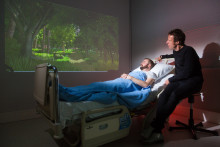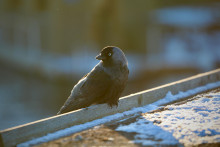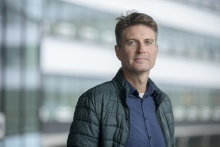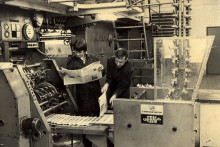UT-based scientists Thomas van Rompay, Geke Ludden and Gijs Huisman are working on a Tech4People project ‘Digitalizing Nature to Increase Resilience’. ‘Research has shown that exposure to nature is particularly beneficial for patients in hospital settings, which is what our initial project will focus on,’ explains Thomas van Rompay. ‘The idea can, however, be applied to other domains. Nature exposure is helpful for everyone, including office workers, employees in factories or people in urban areas.’
Combining vision, sound and touch
Nature’s positive influence on people’s well-being has already been proven. A study by Roger Ulrich from 1984, for instance, compared two groups of patients: one with a view of green scenery full of nature elements, the other with a view of a brick wall. The patients, who could look out their windows and see trees, recovered faster and used less medicine. The UT project builds on these findings. ‘We try to zoom in on specific features of nature that should do the trick,’ clarifies Geke Ludden. ‘We plan to use all possibilities of technology and create a multisensory experience for patients recovering in hospitals. We will combine vision, sound and even haptic features.’
One of the goals of the project is to create realistic nature projections, possibly in a form of a virtual window which allows the user to forget that the nature is only digital. ‘We also want to use subtle sounds and maybe even scents and imitations of wind. Everything has to be very subtle, though. People shouldn’t even be able to notice it. The digital experience should function in a form of a peripheral interaction, it shouldn’t be the main focus of the room and demand attention,’ points out Ludden.
Digital nature versus real nature
Why is creating a digital version of a natural environment better than incorporating an actual nature into the room, perhaps by using plants? ‘You need the dynamic experience with nature. If you involve only a projection or a plant, the experience is not dynamic. Nature features are being incorporated into modern architecture, of course, and if you can have an entire garden right in the hospital, then go for it. However, that is often not possible due to costs or hygiene. That is where this project comes in,’ answers Ludden.
As the project is officially authorized to last only six months, the researchers might not get the opportunity to test their setup on real patients in a hospital. Nevertheless, they are planning to build a replica of a hospital room at the UT campus to test people’s reactions to different nature-inspired stimuli.
‘You need a sense of mystery’
‘We have done pretesting of various nature images and we’ve discovered that the sense of spaciousness and mystery is very important in projections of nature. There has to be certain unpredictability, the patient needs to feel that there is more to explore than first meets the eye,’ says Van Rompay. ‘Beauty of the image also has a large influence. Beauty isn’t as individual as you might think,preferences for some patterns, such as symmetry and balance, are universal.’
With the online pretests being done, it should soon be time to test the actual hospital room setup built at the UT. The researchers want to test the sense of presence, meaning how much people feel that they are actually surrounded by nature when inside the setup. It is worth mentioning that the UT scientists are collaborating with a research group from KAIST university in South Korea. Their Korean partners plan to build a similar setup as the one at the UT, so the two research groups can do simultaneous and cross-cultural testing.
The full article can also be found in the November issue of the UT Nieuws magazine.







